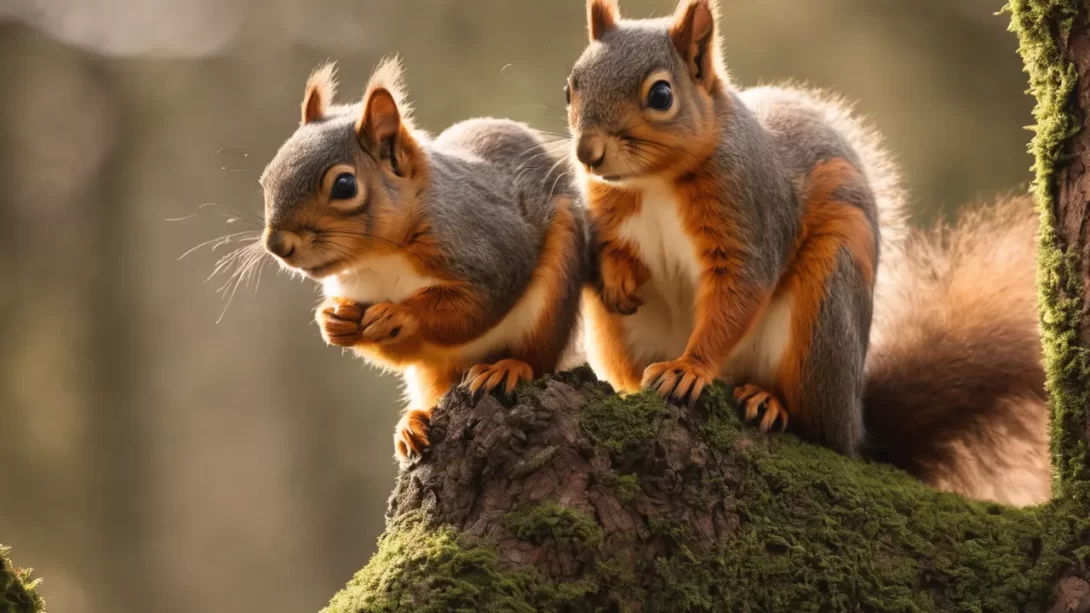Squirrels, while playful and entertaining to watch, can be a significant challenge for gardeners and homeowners. These agile creatures are often attracted to trees for their bounty of nuts, fruits, and as a safe haven for nesting. However, their presence can lead to damaged trees, lost fruit crops, and other gardening woes. This article will explore humane and effective methods to deter squirrels from inhabiting and damaging your trees.
Squirrels
Squirrel Behavior: Squirrels are known for their agile climbing and jumping abilities. They are primarily active during the day and are often seen foraging for food, which includes nuts, seeds, and fruits.
Attraction to Trees: Trees offer squirrels a source of food and a safe place for building nests. Fruit-bearing trees are especially attractive, as they provide a consistent food source.
Coexistence: While it’s important to protect your trees, it’s equally important to remember the role of squirrels in the ecosystem. They are key in seed dispersion and maintaining ecological balance. Therefore, the goal should be to deter them from causing harm, not to eliminate them from the environment entirely.
Preventive Measures
Garden Cleanliness: A clean and tidy garden is less likely to attract squirrels. Regularly remove fallen fruits, nuts, and seeds from around your trees to reduce their food sources.
Squirrel-Resistant Trees: If you’re planning a new garden or adding trees, consider choosing varieties that are less attractive to squirrels. Some trees are less likely to be targeted for their fruit or nuts.
Tree Maintenance: Regular pruning and maintenance of trees can make them less accessible to squirrels. Removing low-hanging branches reduces their ability to jump onto trees from the ground or nearby structures.
Physical Barriers and Deterrents
Implementing physical barriers is a highly effective way to prevent squirrels from accessing your trees. These methods are non-invasive and can be applied without harming the squirrels or the trees.
Metal Collars and Baffles: Installing metal collars or baffles around the trunks of trees can prevent squirrels from climbing them. These should be placed high enough to be out of a squirrel’s jumping range and should encircle the entire trunk.
Netting and Wire Mesh: Protect specific branches or fruits by covering them with netting or wire mesh. This method is particularly useful for fruit-bearing trees, where squirrels often go for the ripening fruit.
Pruning Strategies: Pruning trees to create a physical gap between them and other jump-off points (like buildings or other trees) can be effective. Ensure there is a distance of at least 6 to 8 feet, as squirrels can jump quite far.
Natural Repellents
Natural repellents offer a non-toxic and humane way to discourage squirrels from frequenting your trees. These methods rely on scents and tastes that are unappealing to squirrels.
Capsaicin Sprays: Capsaicin, the compound that makes peppers hot, is distasteful to many animals, including squirrels. Spraying a capsaicin-based repellent on trees can deter them, but it needs to be reapplied regularly, especially after rain.
Predator Urine: Using predator urine around the base of trees can create a scent barrier that scares away squirrels. However, its effectiveness may diminish over time, and it requires frequent reapplication.
Application Tips: When using any natural repellents, it’s important to follow the instructions carefully and reapply as needed. These repellents should be applied to the areas around the tree rather than directly on the fruit or foliage to avoid any potential damage to the tree itself.
Squirrel-Proofing Your Trees
Beyond direct deterrents, there are additional measures you can take to make your garden less appealing to squirrels.
Securing Bird Feeders: If you have bird feeders in your garden, ensure they are squirrel-proof. Squirrels are often attracted to the seeds in bird feeders and may venture onto your trees if they are nearby.
Motion-Activated Sprinklers: These can startle and deter squirrels from entering the area around your trees. The sudden movement and spray of water act as an effective repellent.
Ground Area Maintenance: Keeping the ground around your trees clean and free of attractants like fallen fruits and nuts can make the area less inviting to squirrels. Consider using gravel or mulch, as squirrels prefer digging in softer soil.
Balancing Squirrel Activity and Tree Health
Achieving a balance between deterring squirrels and maintaining tree health is essential for a thriving garden ecosystem. Understanding and respecting the natural behaviors of wildlife while protecting your trees is key.
Ecological Benefits of Squirrels: Squirrels play an important role in the ecosystem, including aiding in seed dispersal and creating habitats for other wildlife. Acknowledging their role can help guide humane and environmentally friendly deterrent methods.
Creating a Wildlife-Friendly Environment: Designing a garden that accommodates wildlife can reduce conflicts. Providing natural food sources away from your trees, such as a small wild area or a squirrel feeder, can divert their attention from your trees.
Non-Lethal Control Methods: Emphasize the use of non-lethal methods to control squirrel activity. This approach ensures the safety of the squirrels and the health of your garden.
Conclusion
Protecting your trees from squirrels requires a multifaceted approach that combines physical barriers, natural repellents, and garden management strategies. Remember, no single method is foolproof, and combining different strategies often yields the best results.
Consistency in applying these methods and adapting them as needed based on the behavior of the squirrels in your garden is crucial. Be patient, as it may take some time for the squirrels to adapt to the changes in their environment.
Finally, embrace the challenge as part of the gardening experience. While squirrels can be a nuisance, they also bring life and energy to a garden. Finding a balance that allows you to enjoy both your trees and the wildlife they attract is the ultimate goal. Happy gardening!




